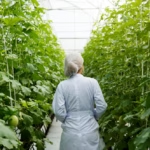In modern agriculture, the integration of technology and advanced equipment has become essential for improving efficiency, productivity, and sustainability. For South African farmers, these innovations can help address challenges such as labor shortages, climate variability, and market demands. Here’s how to incorporate technology and equipment to enhance your farm operations.
1. Conduct a Needs Assessment
Before adopting new technologies or equipment, identify the specific challenges your farm faces. This ensures you invest in tools that address your needs rather than opting for trends that may not suit your operations.
Key Steps:
- Analyze your farm’s operational processes, such as planting, irrigation, harvesting, or storage.
- Consult with agricultural advisors or industry experts to identify relevant technologies.
- Prioritize solutions that provide the highest return on investment.
2. Invest in Precision Agriculture Tools
Precision agriculture uses technology to monitor and manage farm inputs and outputs efficiently. It helps farmers make data-driven decisions, reducing waste and improving yields.
Technologies to Consider:
- GPS-enabled equipment for accurate planting and soil mapping.
- Drones for monitoring crop health, pest infestations, and irrigation needs.
- Sensors for measuring soil moisture, nutrient levels, and weather conditions.
3. Automate Repetitive Tasks
Automation can significantly reduce labor costs and improve consistency in farm operations. This is particularly beneficial for large-scale farms.
Examples of Automation:
- Automatic irrigation systems that adjust water delivery based on soil moisture.
- Robotic harvesters for crops like fruit, vegetables, or grains.
- Feeding systems for livestock that dispense precise quantities of feed.
4. Use Farm Management Software
Farm management software streamlines operations by providing tools to track expenses, monitor crop progress, and plan tasks. It centralizes farm data, making it easier to manage resources.
Features to Look For:
- Inventory management for seeds, fertilizers, and equipment.
- Financial tracking for expenses, profits, and losses.
- Mobile compatibility for real-time updates in the field.
5. Embrace Renewable Energy Solutions
Renewable energy sources like solar and wind power can reduce operational costs and enhance sustainability. These solutions are particularly useful for powering equipment in remote areas.
Applications on Farms:
- Solar-powered irrigation pumps for water management.
- Solar panels to power cold storage units, reducing post-harvest losses.
- Wind turbines for electricity generation on larger farms.
6. Adopt Smart Irrigation Systems
Water is a critical resource for farming, especially in South Africa, where droughts are common. Smart irrigation systems help conserve water while ensuring crops receive adequate hydration.
Examples of Smart Irrigation Technology:
- Drip irrigation systems that deliver water directly to plant roots.
- IoT-enabled irrigation controllers that adjust schedules based on weather data.
- Rainwater harvesting systems integrated with irrigation setups.
7. Explore Mechanized Equipment
Mechanized equipment improves efficiency in planting, harvesting, and soil preparation. While these tools require a higher initial investment, they save time and labor costs in the long run.
Common Mechanized Tools:
- Tractors with attachments for plowing, planting, and spraying.
- Combine harvesters for grains and cereals.
- Mechanical seeders for uniform planting.
8. Leverage Post-Harvest Technologies
Post-harvest losses can significantly reduce profitability. Technology that improves storage, processing, and packaging can help preserve produce quality and extend shelf life.
Examples of Post-Harvest Tools:
- Cold storage units to maintain freshness.
- Sorting and grading machines for fruits and vegetables.
- Vacuum packaging systems for extended storage of processed goods.
9. Train Your Workforce
Introducing technology requires training for your farm workers to ensure they can operate and maintain equipment effectively. Without proper training, even the best technology may not yield desired results.
Training Tips:
- Partner with equipment manufacturers for hands-on demonstrations.
- Offer regular workshops on new technologies and techniques.
- Encourage workers to share feedback on tools for continuous improvement.
10. Monitor and Evaluate Performance
After implementing new technologies, monitor their impact on your farm’s operations. Regular evaluation helps identify areas for improvement and ensures you’re getting the most from your investments.
What to Monitor:
- Changes in yield and productivity.
- Reductions in input costs, such as water, fuel, or labor.
- ROI (return on investment) for specific technologies or equipment.
Incorporating technology and equipment into farm operations is no longer optional for South African farmers seeking to remain competitive and sustainable. By adopting precision tools, automation, renewable energy, and smart irrigation systems, you can boost efficiency, reduce costs, and enhance productivity. Remember, the key to successful integration lies in careful planning, targeted investments, and ongoing training for your workforce.








